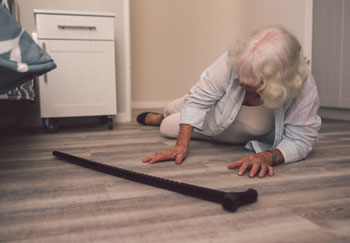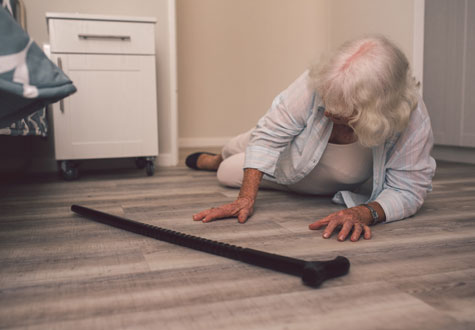
It is officially the first week of fall, which also means that it is Fall Prevention Awareness Week. Falling down may not seem like a big deal. However, for those that are older, it can be a very serious injury concern.
According to the U.S. Centers for Disease Control and Prevention, every 11 seconds an older adult (those 65 or older) is treated in an emergency room for a fall, and every 20 minutes an older adult dies from a fall. Falls are the leading cause of fatal injury and trauma-related hospital visits among older people. The numbers are on the rise.
It is important to be aware of these facts and be proactive about keeping yourself or your family members safe and in good physical condition. Be sure to talk to your doctor about your risk for falling. Use the tips below to reduce your chances of injury.
Tips to Prevent Falls
- Do exercises that improve your balance and make your legs stronger. Exercise also helps you feel better and more confident.
- Have your doctor or pharmacist look at all the medicines you take, including over-the-counter medicines. Some medicines can make you sleepy or dizzy.
- Have your eyes checked by an eye doctor at least once a year, and update your glasses.
- Get up slowly after you sit or lie down.
- Wear shoes both inside and outside the house. Avoid going barefoot or wearing slippers.
- Improve the lighting in your home. Put in brighter light bulbs. Florescent bulbs are bright and cost less to use.
- It’s safest to have uniform lighting in a room. Add lighting to dark areas.
- Hang lightweight curtains or shades to reduce glare.
- Paint a contrasting color on the top edge of all steps so you can see the stairs better. For example, use a light-colored paint on dark wood.
Fall Prevention Tips: Make Your Home Safer
Floors:
- Walking paths should be clear of furniture and clutter.
- Secure rugs with double-sided tape or nonslip backing.
- Coil or tape wires and cords next to the wall so they are not walked over.
Stairs and Steps:
- Remove objects from stairs.
- Fix any broken or uneven steps.
- Steps should be free of loose or torn carpet.
- Stairway should have sufficient lighting.
- Install handrails on both sides of the stairs.
Kitchen:
- Place frequently used items on lower shelves.
- Have a sturdy stool with a bar to hold onto.
Bathrooms:
- Place a nonslip rubber mat or self-stick slips on the tub or shower floor.
- Install grab bars to use to get in and out of the tub.
Bedrooms:
- Light should be near the bed, within reach.
- Use nightlights to light path from bedroom to bathroom.
